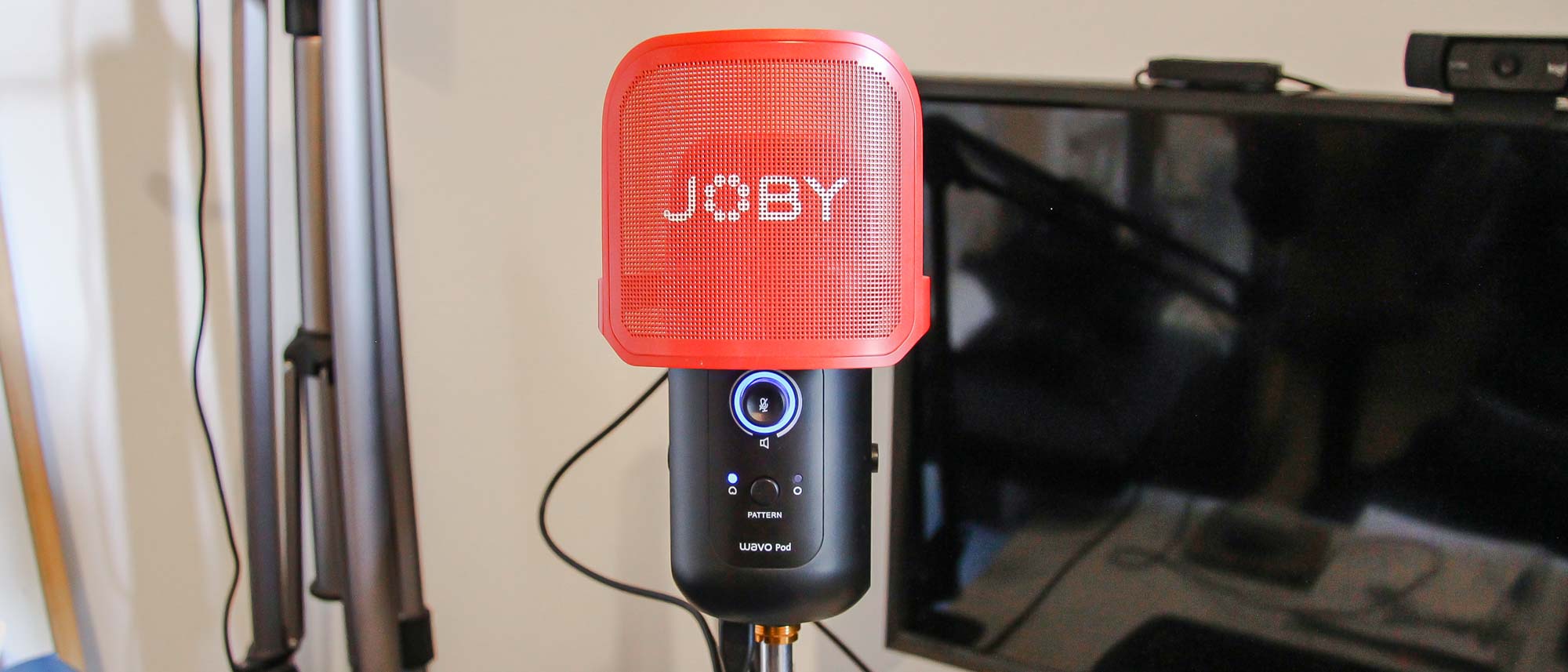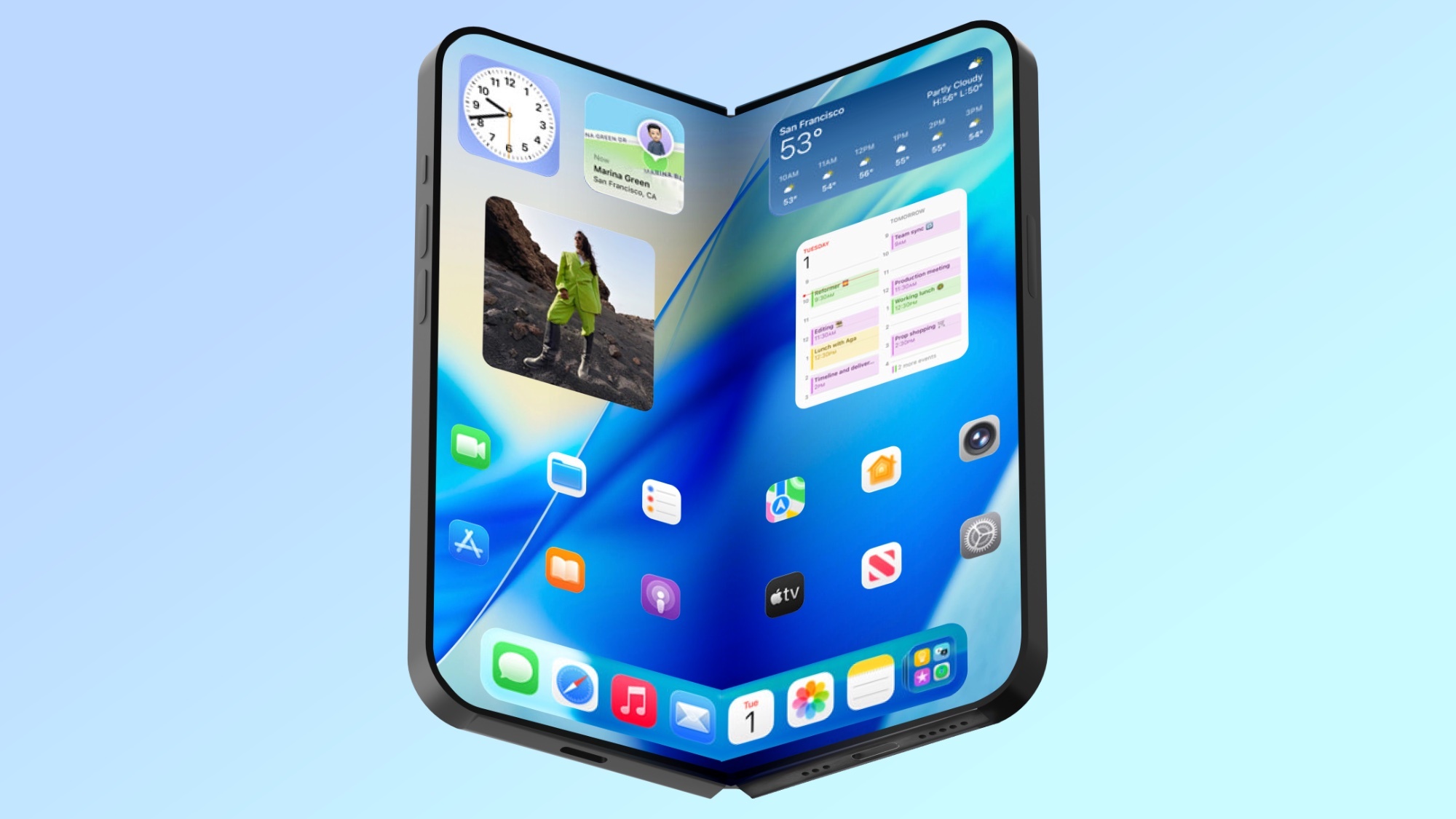Tom's Guide Verdict
The Joby Wavo Pod could be an ideal first mic, but it's not quite the do-it-all solution it claims to be.
Pros
- +
Cardioid mic pattern useful for streamers
- +
Easy to set up and use
Cons
- -
Sound quality is bettered by rivals
- -
Design doesn't feel particularly well thought out
Why you can trust Tom's Guide
Connection: USB
Ports: USB-C, 3.5mm jack
Condensers: Electret
Directional patterns: Cardioid, omni-directional
Size: 3.9 x 3.9 x 9.4-inches
Weight: 1.58 pounds (with mount)
This is one of Joby’s (pronounced Joe-bee) latest ventures into the world of microphones. It's perhaps better known for its range of flexible tripods like the Joby GripTight One GP Stand & Mount in our best iPhone tripods guide.
Extending its reach with a move into the world of streaming mics, the new Joby Wavo Pod is a well-rounded mic aimed at streaming beginners. It has a few interesting tricks up its sleeve, but be sure to take note of what your requirements really are if you're considering this mic.
Podcasting is something Joby says the Wavo mic is also great at, but a new mic that’s both friendly for beginners and universally flexible in both streaming and podcasting duties? I don’t think so. The Joby Wavo Pod definitely sells itself very well, but rarely do we find a mic under $100 that's truly a Swiss Army Knife of the home recording studio.
Read this full Joby Wavo Pod review to find out whether its skillset is right for your needs.
Joby Wavo Pod review: Price and availability
- Attractive price
- Black and red colorway may not appeal to all
The Joby Wavo Pod is priced at $99 and available at the official Joby website, Best Buy and Amazon. It's only available in black and comes with a red pop filter.
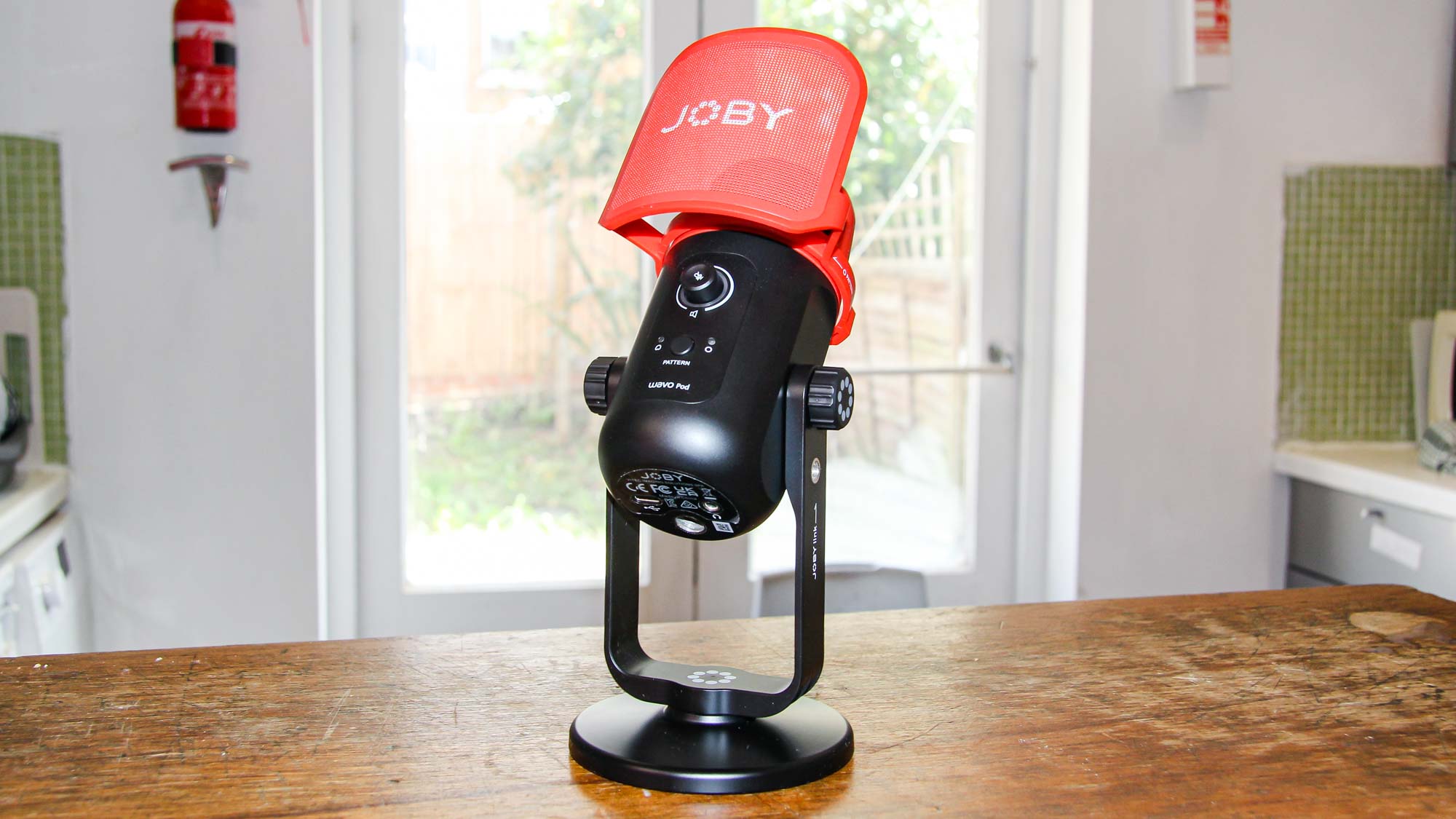
Joby Wavo Pod: Accessories
- Pop filter supplied
- 2x USB cables
The Wavo Pod comes with a red metal 'pop' filter and a stand which feels nicely weighted but at the same time not the most sturdy. It is also worth mentioning that on unpacking the Joby from its box, some of the stand's cushion-like pads fell off. This wasn’t too much of an issue, but having this happen right out of the box makes me question the build quality of the overall product.
USB-C-to-USB-C cable and a USB-C-to-USB-A cables are supplied, which makes it practical to use on the go with phones and tablets, as well as on laptops and desktops, and is easy to set up and use pretty much straight away.
Get instant access to breaking news, the hottest reviews, great deals and helpful tips.

Joby Wavo Pod review: Design
- Versatile connectivity
- Chunky design
Joby clearly wants to stick with the brand's familiar black and red colorway, and here the main body of the mic is a nice matte black, while the supplied pop filter accessory is bright red. Whether this is right for your streaming setup depends on the look and feel you want to give on camera, and the color combo could either make a stylish statement or stick out like a sore thumb.
Standing around 9.5-inches high, the Wavo Pod reaches a comfortable height to be level with my mouth on the supplied stand sat on my desktop, but this will obviously be dependent on the height of the table or desk it’s placed on. For the best movability you may prefer to fit it to a desk arm. Despite its rather chunky dimensions and weight at 1.58 pounds, it works fine on my setup but this may be something to consider for your own setup.
The stand itself has two link holes to enable Joby add-ons and accessories, bringing an extra degree of flexibility for any new streamer or podcaster.
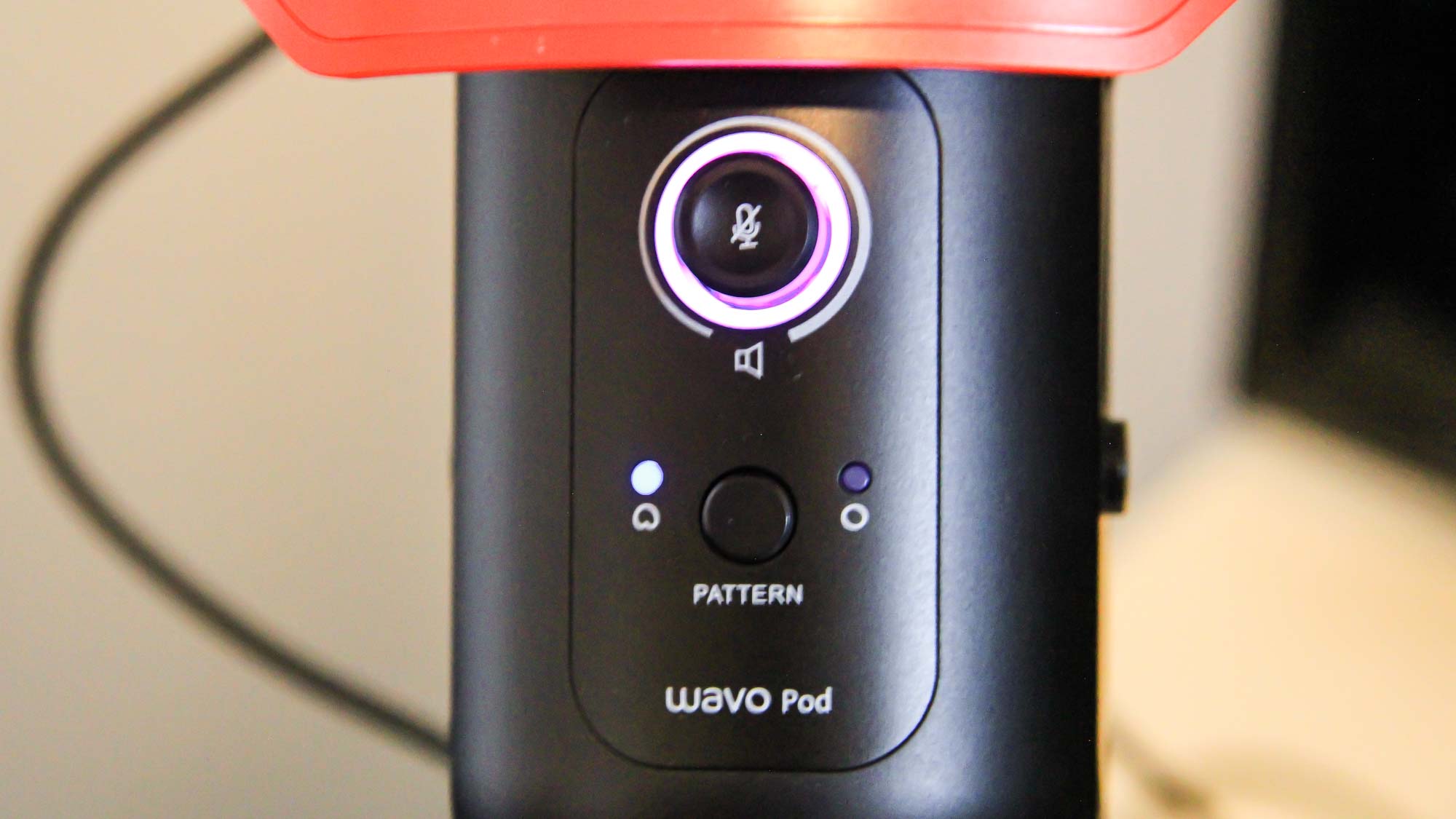
Joby Wavo Pod review: Features
- Selectable cardioid and omni-directional pickup patterns
- Mic gain and headphone level control
- Some minor ease of use problems
The Wavo Pod has several welcome features on the mic itself, and you can select cardioid or omni-directional patterns via a small button on the front, beneath the main function dial. The main control with blue outer ring provides microphone gain adjustment, as well as control of the output level to a pair of headphones plugged into the 3.5mm jack socket at the base of the microphone. To switch between these two modes, users simply make a long press of the main control. And, lastly, a single short press mutes the mic’s input completely.
As useful as some of these features are, when pressing the mute button I found it created a click sound, which was a bit annoying while recording. Also, the dial is unclear. There isn’t a mark or indent on the dial itself to indicate what position it's set to, and can be turned continuously without ever coming to a stop, making it a little impractical.
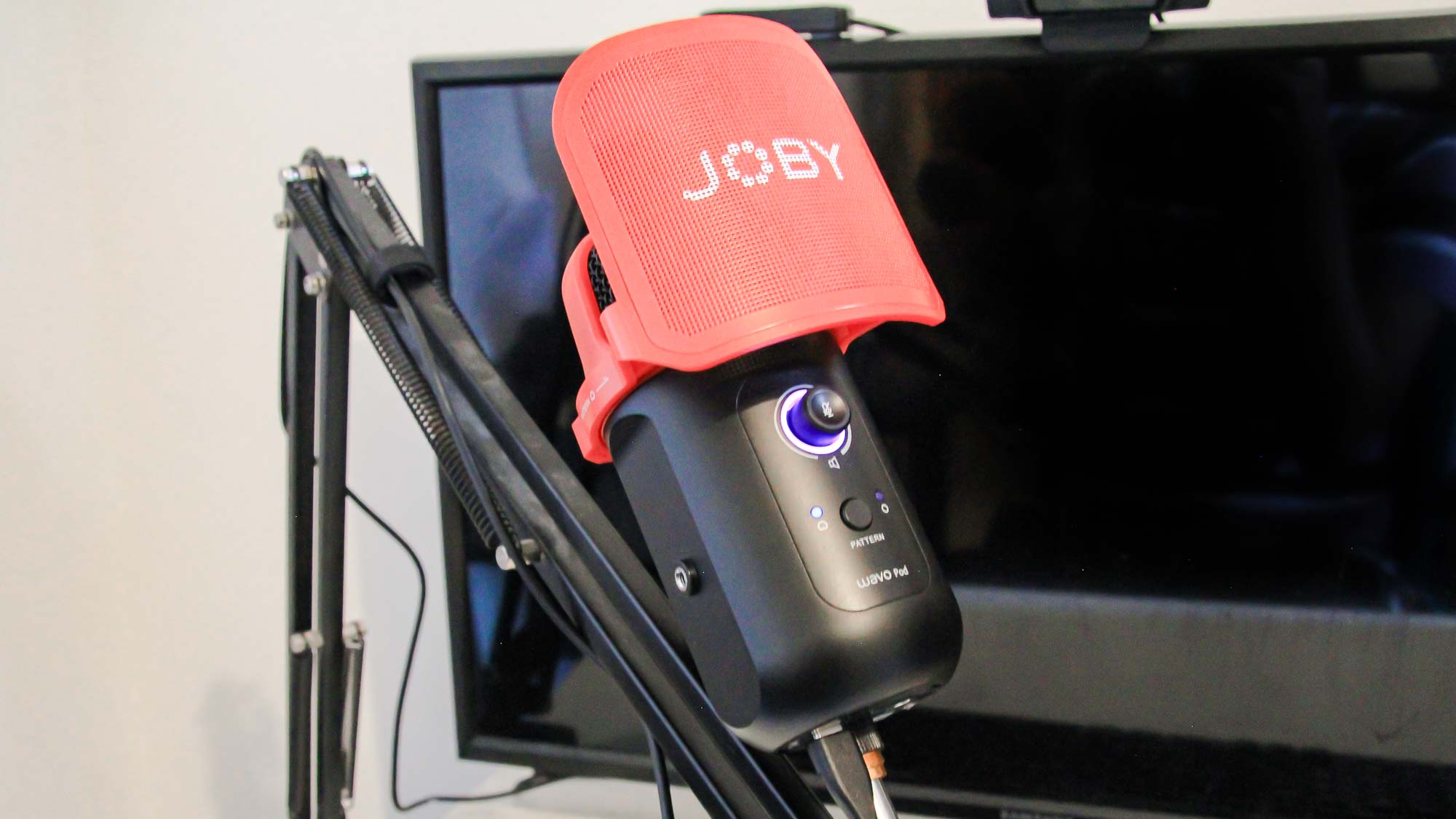
Joby Wavo Pod review: Sound quality
For comparison, I tested the Joby Wavo Pod against two cheaper USB microphones: the Razer Seiren Mini ($50) and the Neewer NW-800 (around $22).
Generally, the Joby's sound output was okay. Its features draw it closer to the asking price, rather than the more affordable models mentioned above.
In terms of performance, though, I did feel the Joby was out performed by the Razer at half the price. The Wavo Pod’s sound is very much at the front of the soundstage and doesn’t appear to capture low frequencies nearly as well as the Razer, and the Joby's output has the sound characteristic of walky-talky. This could be acceptable for streaming, but for voiceover work or anything accompanying music, the Joby Wavo Pod doesn't sound the best mic for the job.
For podcasting, things don't work so well either. Joby advertises the mic for single use where the mic sits between two people thanks to its omni-directional pickup pattern. This is rarely a good idea — as for this podcasting situation the best idea is to employ two separate mics — and the Joby doesn't work particularly well here either. During my tests, it picked up a lot more than the two subjects talking, which wasn't satisfactory if you consider that you could get two of either of the aforementioned mics I selected for comparison for less or the same price and get better results.

The cardioid mode is definitely the more useful of the two pickup patterns, and far better at picking up everything directly in front of the mic without being affected by ambient noise in the room or off-mic conversations. The difference makes the Wavo Pod a more professional sounding streaming setup.
Sadly, the metal pop filter that supplied really doesn't add any value. This mesh-like grille clips onto the front of the mic, and during my tests I really couldn't hear any difference to the sound performance of the mic. I regularly use a pop filter for voiceover recordings, but the Joby accessory didn't prevent pops or sibilant sounds from coming through and making it onto the recording.
Joby Wavo Pod review: Verdict
At almost $100, it’s difficult to recommend the Joby mic as a model for beginners. There's plenty of better-performing contenders out there with the same kind of features for less than Joby is asking.
If I had to recommend the Wavo Pod, it would be to budding streamers where it performed best in my testing. But if you’re a podcaster or voiceover person, then I recommend looking to the likes of the Rode PodMic or Blue Yeti microphones. Both are priced at $99, and are some of the best podcast microphones in our buying guide.

Some people say being a games journalist, streamer and video maker makes him a triple threat, but the only three things Mahin likes are long walks to the fridge, boba tea and sitting down. Mahin is currently a junior video editor at Future Publishing and was previously a freelance writer for Eurogamer, Gamingbible, Tech Radar, Games Radar, and the Daily Star (among others), as well as hosting several gaming themed radio shows. Mahin specialises in all things audio from streaming equipment to gadgets and gaming. He's a big fan of Nintendo and pop culture, and can usually be found playing Pokemon whilst listening to the Gemma Collins podcast.
